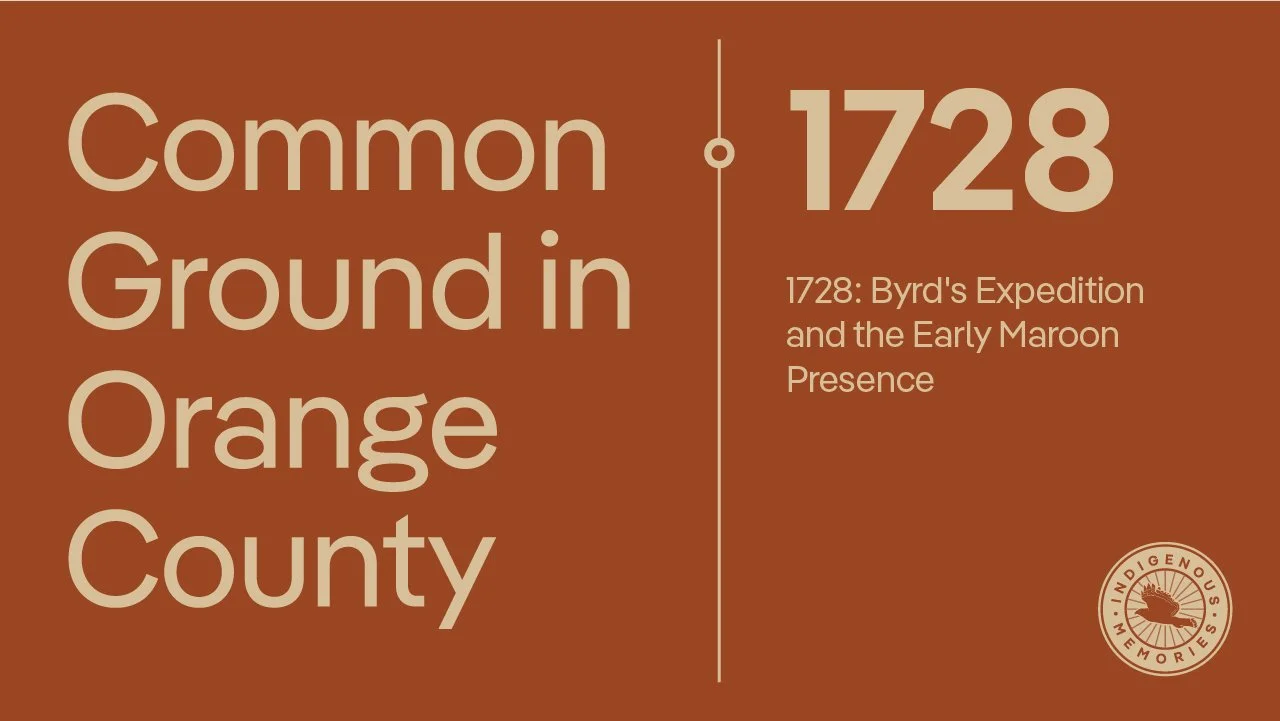
1728
BYRD’S EXPEDITION & THE EARLY MAROON PRESENCE
As William Byrd II and his team meticulously charted the boundary between Virginia and North Carolina, their journey took them to the fringes of a mysterious and sprawling landscape: the Great Dismal Swamp.
Byrd recounted encountering a family he described as "mulattoes" living freely near the swamp's edge. This observation hints at a significant reality: the presence of individuals of mixed heritage existing outside the rigid structures of colonial society.
More strikingly, Byrd acknowledged the swamp's dense and remote nature as a likely sanctuary for runaway enslaved people and others seeking to evade colonial authority. This early recognition shined a light on the nascent maroon communities hidden in the swamp's recesses.
"The maroon communities really start as early as the 1600s,” said Dr. Arwin Smallwood, Professor Emeritus at North Carolina Central University. “The first people in the Great Dismal are going to be native people who have been displaced by white colonists.”
These people were joined by white indentured servants and later runaway enslaved people, he said. “When we have large numbers of Africans being brought in the 1600s, they also, in terms of runaway slaves, will start to move into the swamps as well."
The one group that did not take refuge in the Great Dismal Swamp was white colonists. They were looking for farmland to grow tobacco, so they went around the swampland in search of greener pastures further inland – areas that would eventually become counties like Orange.
Life was undoubtedly challenging for those who sought refuge in the Great Dismal, but it offered a precious degree of freedom. These communities forged unique ways of life. They utilized their knowledge of the land to hunt, fish, and gather resources. The dense vegetation and treacherous terrain provided a natural defense against outsiders.
While self-sufficiency was key, these communities also likely developed intricate social structures and strategies for survival, including potential interactions and trade with Native American groups in the broader region, Dr. Smallwood noted.
The existence of these maroon communities highlights the pervasive nature of resistance to colonial authority and the institution of slavery from its earliest stages. While Orange County was developing as a more settled agricultural region, the possibility of escape and the presence of free individuals of color nearby shaped the social and racial anxieties of the time.
The Great Dismal Swamp, in essence, represents a parallel history – a testament to the human desire for freedom existing alongside the forced labor and racial hierarchies that were solidifying in areas like Orange County.
Featuring Indigenous Memories Consultant in Indigenous Americans and African Americans in Early North Carolina, Dr. Arwin Smallwood

